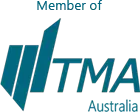Business tax debt can be a warning sign of underlying business problems. Identifying and addressing performance issues early, will increase the business chances of recovery. Dealing with relatively high levels of tax debt requires a specific approach. Based on our 20+ years’ experience dealing with clients with tax debt, we identified some steps and options to consider if you find your business in this position.
1. Assess your business performance
Business tax debt incurs for three main reasons:
- Low profitability or business losses
- Overspending – including drawings and non-business-related expenses
- Customers in default and negative cashflow cycle (payables are much earlier than receivables)
It is crucial to quickly assess and specify the underlying reasons for accumulating tax debt. We recommend implementing accrual accounting (weekly or Monthly) profit loss report and a 13- weeks rolling cashflow forecast. Accurate accrual profit loss reporting along-with cashflow forecasting will immediately flag any issues.
2. Communicate with the ATO
While you are assessing business performance and implementing improvements, it is essential to keep continuous and early communication with the ATO. Be transparent and avoid overpromising, especially if you are uncertain on your ability to pay in the short term. The ATO is more likely to look upon your case favourably if you keep them updated on your situation and make serious attempts to improve business performance and fulfil your compliance obligations. In many cases, a payment plan can be negotiated with the ATO. However, we recommend a structure with gradual increases in payments and based on a realistic profit loss and cashflow forecasting.
3. Start with cashflow (segment and prioritise)
Transforming a business and improving profitability is a long term process that takes months if not years. However, for cashflow, you can segment and prioritise in the 13-weeks rolling cashflow forecast to ensure having sufficient funds for the business to operate. Identify your “key” suppliers and creditors and prioritise these. For other creditors including the ATO, ensure setting realistic payment plans based on payment priorities and cashflow forecast.
4. Eliminate overspending and consider refunding
Significant, regular drawings and high non-business-related expenses can be detrimental to your cashflow, and you can be personally liable for the tax debt. We recommend immediately stopping large drawings and over spending, and refunding the business if possible. Doing this will assist in reducing compliance obligations.
5. Improve cashflow cycle
Non-paying and slow-paying customers can slow down your payment cycles, making it difficult to pay your ATO obligations on time. Consider collection and legal actions against non-paying customers. Ensure having a positive cashflow cycle by negotiating and incentivising shorter receivables and longer payables. Additionally, consider charging interest and fees for late payments.
6. Get expert advice
Engaging the right expertise will help you quickly assess business performance and implement actions to turnaround and improve. If you are unable to meet your business-tax obligations, that could be due to various underlying business issues. Turnaround experts could help you identify these shortcomings and develop a plan to get your business back on track.
The experts will also assess the viability of your business and if you are facing a serious hardship. In that case, the ATO could consider releasing you from some or all of your business tax debt.






